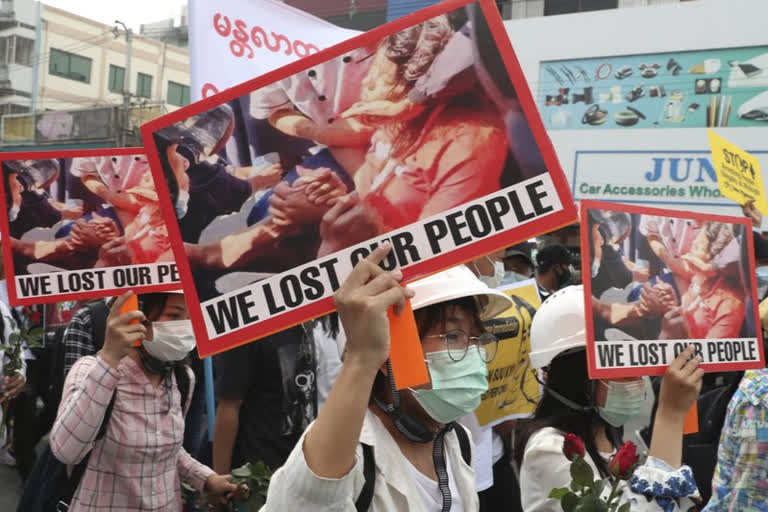Yangon: Security forces in Myanmar ratcheted up their pressure against anti-coup protesters Saturday, using water cannons, tear gas, slingshots and rubber bullets against demonstrators and striking dockworkers in Mandalay, the nation’s second-largest city.
At least five people were injured by rubber bullets and had to be carried away in ambulances, according to an Associated Press journalist who witnessed the violence.
Protesters and residents were forced to flee the neighbourhood amid the violence, as security forces chased after them.
There were reports of sounds that resembled gunfire, but it was not immediately clear whether it was tear-gas canisters being fired or live bullets. A group of journalists was forced to flee after being hit with tear gas and slingshot projectiles.
Earlier in the week in Mandalay, security forces cracked down on state railway workers in a similar fashion after they joined the civil disobedience movement.
Read:|Myanmar military regime backed by China cracks down on protesters
Less than an hour after the 8 p.m. curfew started on Wednesday, gunshots were heard as more than two dozen police officers with shields and helmets marched past railway workers’ housing. Numerous videos posted on social media showed muzzle flashes as shots were heard, and some police shot slingshots and threw rocks at the buildings. Marching chants of “left, right, left, right” could be heard along with shouts of “shoot, shoot.”
U.S. State Department spokesperson Ned Price offered his government’s condolences Friday and reiterated calls on the military to refrain from violence against peaceful protesters.
Across the country, protests showed no signs of slowing down despite recent crackdowns by the military government — including a sixth consecutive night in which the internet was cut for many hours.
